This article is part of our The Wheelhouse series.
A few weeks back, I wrote a piece looking at position players with rebound potential based on a significantly reduced average draft position (ADP).
Space limitations in the magazine led that article to focus solely on position players. As a result, I wanted to take the same process and apply it to starting pitchers. The premise is simple: we are looking at the starters with the greatest decrease in draft price from this time last year. In some cases, the market will overcorrect and yield a viable buy-low opportunity.
Data for this piece includes NFBC drafts completed before February 23, 2016.
Alex Wood (-171.51) // 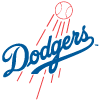
2016 ADP: 273.25 | 2015 ADP: 101.68
Entering last season, I was among the many who believed Alex Wood was capable of reaching the 200-strikeout plateau for the first time in his career. He had shown an ability to miss bats throughout his first two seasons with Atlanta and things were finally lined up to allow him to spend an entire year in the Braves' rotation. A midseason trade to the Dodgers – a team with a front office that I hold in high regard – only solidified my belief in Wood. Although he enters 2016 with a rotation spot, a move to the bullpen may be on tap if he's unable to regain his pre-2015 form early on. With good stuff, but a funky delivery, Wood may present more injury risk than the typical starter, and his second half (3.95 ERA, 59:29 K:BB in
A few weeks back, I wrote a piece looking at position players with rebound potential based on a significantly reduced average draft position (ADP).
Space limitations in the magazine led that article to focus solely on position players. As a result, I wanted to take the same process and apply it to starting pitchers. The premise is simple: we are looking at the starters with the greatest decrease in draft price from this time last year. In some cases, the market will overcorrect and yield a viable buy-low opportunity.
Data for this piece includes NFBC drafts completed before February 23, 2016.
Alex Wood (-171.51) // 
2016 ADP: 273.25 | 2015 ADP: 101.68
Entering last season, I was among the many who believed Alex Wood was capable of reaching the 200-strikeout plateau for the first time in his career. He had shown an ability to miss bats throughout his first two seasons with Atlanta and things were finally lined up to allow him to spend an entire year in the Braves' rotation. A midseason trade to the Dodgers – a team with a front office that I hold in high regard – only solidified my belief in Wood. Although he enters 2016 with a rotation spot, a move to the bullpen may be on tap if he's unable to regain his pre-2015 form early on. With good stuff, but a funky delivery, Wood may present more injury risk than the typical starter, and his second half (3.95 ERA, 59:29 K:BB in 84.1 innings) was nothing to write home about. To date, Wood has a 20.6% K% as a starter since arriving in the big leagues in 2013, compared to a 27.8% K% as a reliever. Fortunately, his walk rate has been nearly identical in those roles at 7.3% (as a reliever) and 7.2% (as a starter), respectively. In 15-team mixers (and anything deeper), he can be a passable staff filler (54.0% GB% in the second half of 2015), but the upside appears to be much less than previously perceived. If you're looking for the left-handed counterpart to Andrew Cashner, Wood is probably your guy. However, the Dodgers' increased rotation depth does raise questions about the leash he has to work with this season.
Julio Teheran (-94.77) // 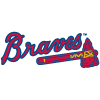
2016 ADP: 177.40 | 2015 ADP: 82.63
It's easy to lose sight of Teheran's age – he just turned 25 in January – since he first pitched for the Braves as a 20-year-old in 2011. Inconsistent command led to struggles with control (career-high 3.3 BB/9, 8.7% BB%) and an increased home-run rate (1.21 HR/9). Not surprisingly, Teheran's WHIP jumped from 1.08 in 2014 to 1.31 a year ago. Little changed in his arsenal, however, as he managed to increase his average fastball velocity by 0.8 mph (91.2), his slider usage barely increased, while his curveball and changeup usage declined slightly. Fortunately, he showed signs of progress during the second half (3.42 ERA, .231 BAA, 22.2% K%), and an overall increase in groundballs (career-high 39.7% GB%). Even on a team that figures to be the league's worst in terms of providing run support, Teheran appears to be a nice target at a price that is typically six rounds later than his 2015 one.
Jeff Samardzija (-79.94) // 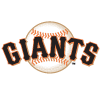
2016 ADP: 155.00 | 2015 ADP: 75.06
Samardzija was the worst kind of bad in 2015 in that he was often temping enough to use in deeper leagues even as his struggles persisted. At the end of the season, his strikeout rate was significantly below his previous levels (17.9% K%, 6.9 K/9) and his home-run rate surged thanks to a move into U.S Cellular Field, and a suddenly reduced ability to induce outs on the ground (39.0% GB% after back-to-back seasons above 48.0%). The year-by-year growth in his profile from 2012-2014 seemed very sustainable, which made the crash even more surprising. The Giants paid Shark $90 million this winter to help stabilize their rotation. With the move back to the National League, at least a small bump in strikeout rate is imminent, while his ratios should improve thanks to a better defense behind him in San Francisco and a very cavernous home park. After throwing a one-hitter against the Tigers in September, Samardzija told the Chicago Tribune that he was tipping pitches – specifically his fastball – which ultimately may have fueled his sudden inability to miss bats at a high clip.
Gio Gonzalez (-75.38) // 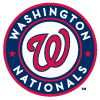
2016 ADP: 194.80 | 2015 ADP: 119.42
2014 – 24.8% K%, 8.6% BB%, 44.8% GB%, 3.57 ERA, 1.20 WHIP (3.03 FIP) in 158.2 IP
2015 – 22.3% K%, 9.1% BB%, 53.8% GB%, 3.79 ERA, 1.42 WHIP (3.05 FIP) in 175.2 IP
With a BABIP that spiked to .341 (career .295), Gonzalez should have an overwhelming shift in hard hit balls to go with it. That did not happen, however, (28.5% Hard% last season, 27.0% career) and with the appropriate foundation of two starters with excellent WHIP marks to stabilize a rotation, Gonzalez has the tools necessary to be a quality third piece in 2016. Of the numbers above, the innings totals are the greatest concern, as the increase in WHIP has all of the makings of an aberration. If you're looking for a Francisco Liriano knock-off available 75 picks later, this is the play.
Jordan Zimmermann (-68.15) // 
2016 ADP: 123.66 | 2015 ADP: 55.51
The left side of the Nats' infield last season was bad – Yunel Escobar checked in 40th out of 48 third baseman in the FanGraphs' defensive ratings metric, while Ian Desmond failed to crack the top-20 among shortstops despite turning things around following an abysmal start. While Nick Castellanos is still a work in progress at the hot corner, he's young enough to improve (he was worse than Escobar last season), Jose Iglesias is a big upgrade at shortstop for Zimmermann. Unfortunately, Comerica Park is a more difficult home park for him to pitch in, and the AL Central in 2016 should be more difficult to navigate than the NL East was in 2015. In terms of dollars earned, Zimmermann was still a top-30 starting pitcher last season, but he was priced as a top-15 option. This time around, he's priced fairly based on the 2015 output, which very closely resembled his typical skills outside of a spike in home runs (career-high 1.07 HR/9 and 10.9% HR/FB – career: 9.1%). He's a viable third starter at this point in most leagues, but the ceiling has been lowered.
Yu Darvish (-53.73) // 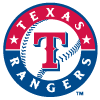
2016 ADP: 126.33 | 2015 ADP: 72.6
The Rangers have Darvish in camp pushing through the later stages of his rehab from Tommy John surgery. There are still questions as to when he'll be ready to pitch in games again, but I would avoid drafting him with an expectation of getting innings before June 1. Rather than rely on the depth options to stream in his place until he's ready and then plug in Darvish regularly upon his return, I prefer to hold off on investing in him in 2016 barring a discount greater than his current price.
James Shields (-44.54) // 
2016 ADP: 135.31 | 2015 ADP: 90.77
Petco has changed. It's part of the reason Ian Kennedy appears to be more valuable with his move from the Padres to the Royals via free agency. Despite piling up 216 strikeouts, Shields returned less 5x5 value than Zimmermann ($8 v. $10) last season. The WHIP may continue to be problematic, however, as the increased strikeout rate was accompanied by a spike in walks (he doubled his rate from 4.7% in 2014 with the Royals to 9.4% last season). As Todd Zola pointed out in his column last week, Shields was the victim of a career-high 17.6% HR/FB rate. Keep in mind, however, that his baseline may be changed simply by the new home park – the current iteration of Petco is much more conducive to the long ball than the Trop or Kauffman Stadium were during his time in the American League. With the changing park factors in San Diego, figuring out Shields' new baseline in HR/FB is difficult. If when Shields is being considered, you have a strong foundation in ratios while being lighter in strikeouts, he makes at least a modicum of sense as a third starter (again, thinking in terms of 15-team mixers). Outside of that, the discount on Shields isn't to the point where he's one of my targets on draft day.
Hisashi Iwakuma (-41.8) // 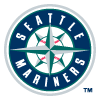
2016 ADP: 142.83 | 2015 ADP: 101.03
A failed physical forced Iwakuma's deal with the Dodgers to fall through in December and he returned to the Mariners. Although his velocity has diminished from year-to-year during his time in Seattle, Iwakuma continues to be a plus contributor in the WHIP category. The strikeout and walk rates remained in line with his career norms last season, but he made just 20 starts as a result of injuries. Everything appeared to be clicking for him late in the year, however, as Iwakuma posted a 2.63 ERA and 0.95 WHIP with a 74:13 K:BB in 82 innings over his last 12 starts. Nothing has changed skills wise, and taking the plunge at this year's discounted price makes more sense than banking on a significant jump in value from Shields or Zimmermann.
Felix Hernandez (-36.04) // 
2016 ADP: 49.72 | 2015 ADP :13.68
While a few very bad starts significantly impacted Hernandez's overall numbers (most specifically, his 3.53 ERA and 1.18 WHIP), there may be a few reasons to consider him as a viable option if you wait for an ace in drafts. Prior to a jump in strikeout rate in 2013, Hernandez had a four-year stretch with a K% between 22.2-23.8%, so a fall back to 23.1% – backed by a still strong 10.7% swinging-strike rate (career 10.3%) isn't a necessarily a mark of steep decline. For the second straight season, Hernandez maintained a groundball rate north of 55.0%. Even if the best-case scenario is a return to the 2012 level (with a better chance at 16-plus wins thanks to the increased run support he gets now), you don't have to overpay for the stability King Felix brings to the table, which was certainly the case this time last year.
Johnny Cueto (-34.25) // 
2016 ADP: 73.92 | 2015 ADP: 39.67
When the Reds flipped Cueto to the Royals at the trade deadline last summer, his strikeout rate plummeted from 8.3 K/9 to 6.2. He maintained his improved walk rate, but a significant spike in BABIP drove his ERA to 4.76 over his final 13 starts. Furthermore, opponents compiled a .305 batting average against him during his regular season starts for Kansas City. The D-backs quickly expressed interest in Cueto during the winter, but he turned down an offer from Arizona and eventually signed with San Francisco. Landing back in the National League, and in a pitcher-friendly park (only Citi Field after its adjustments in 2015 has suppressed runs more than AT&T park since the start of the 2013 season) bodes very well for his chances of earning the Year 1 value of his long-term deal in 2016. Cueto has always been able to outperform his FIP, thanks to his ability to work very effectively from the stretch (76.4% LOB% career, 81.5% in 2013, 82.5% in 2014) and induce his fair share of weak contact.










